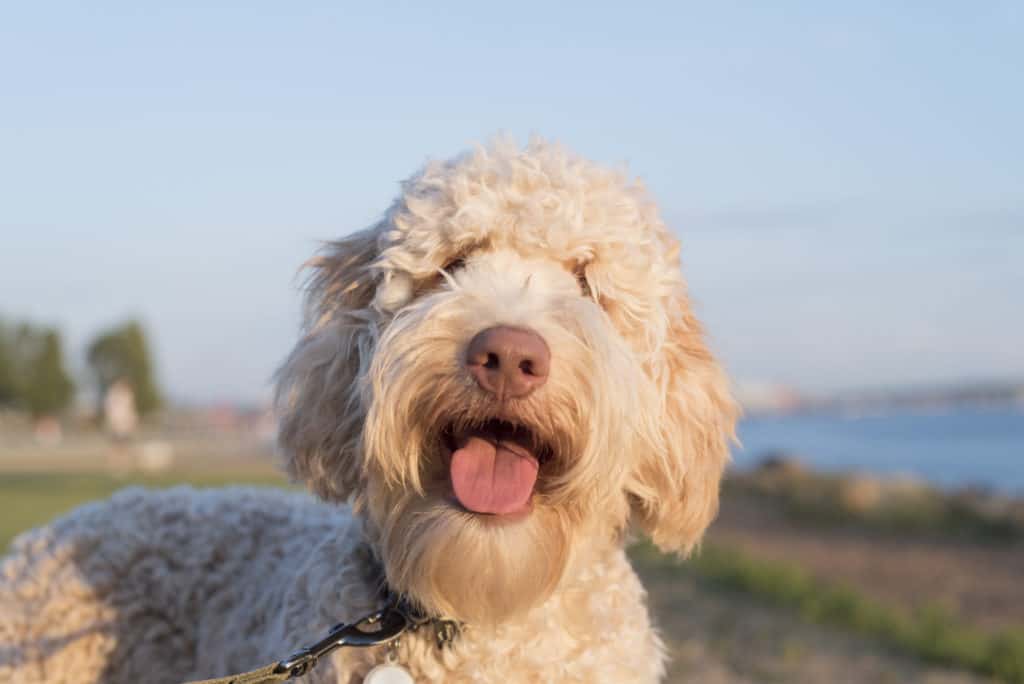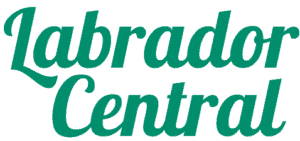
Labradoodles have become a highly sought-after designer dogs, especially for those that have allergies and those in need of the ultimate service dog. The problem is that while the reputation of the dog precedes it, there are misunderstandings over its position as a hypoallergenic dog. So, let’s find out if Labradoodles are hypoallergenic and what new owners need to know about their coat type, shedding, grooming, and more.

What makes Labradoodles allergy-friendly dogs
To understand the appeal of the Labradoodle, we need to look at the Labrador coat.
Labradors are the true definition of man’s best friend and one of the most popular breeds of dogs in the world. They are loyal, playful, and very smart. This means that they are perfect not only as working dogs but also as family pets and service animals.
The downside of owning a Labrador is that they aren’t always suitable for those with dog allergies. Labradors have short coats and can shed a lot. If you own one, you will have to brush them regularly, deal with hair on your clothes, and invest in a good vacuum cleaner with a pet allergen filter inside. This can be a big problem for those with allergies related to pet hair. It is almost impossible to keep on top of. That is why low-shedding and “hypoallergenic” dog breeds are better suited to those with dog allergies.
There is also the issue of dander. Dander is the little bits of dead skin that come off with the hair and find their way into the atmosphere or onto soft furnishings. There are people with dander allergies, and dead skin also breaks down into dust over time. Think of this a little like dandruff as the skin renews itself. It is perfectly healthy for the dog, but not great for those with allergic reactions. Related post: Labrador Retriever Shedding Problems and Solutions
Labradoodles originated from a desire to create a hypoallergenic version of the Labrador for service work.
It is easy to see why there are such high expectations for Labradoodles to be hypoallergenic. This is the primary reason for their creation as designer dogs. The plan was to create the ideal service dog that had all the same personality traits and the obedience of a Labrador, just with a coat that was safe for those with dog allergies. Before this, there was the risk that children with emotional issues or physical disabilities could be denied a service dog due to their allergies. The Labradoodle should be the ideal solution.
However, there are misconceptions about the hypoallergenic traits of a Labradoodle. There is an assumption that you magically get a hypoallergenic animal that won’t shed or cause any other allergic reactions. That isn’t the case at all. Related: Dog allergies: Are Labradors hypoallergenic?

Are any dogs truly hypoallergenic?
There are different ideas of what it means for a dog to be hypoallergenic. Ideally, this means that there is absolutely no risk of allergic reactions because of the type of coat of these dogs. However, this isn’t the case. The truth is that no dog can be truly hypoallergenic because all dogs have to shed their hair at some point. Hair falls out and is replaced, just like with our own. So, those that have an allergic reaction to dog hair could still suffer if they live with a Poodle or any other low-shedding breed.
In other words, you should look for a dog that doesn’t shed a lot and that doesn’t produce dander. Some say that Poodles are hypoallergenic dogs because they are low-shedding with a fleecy coat and no dander. The same is true for a lot of other breeds that have long hair instead of a double fur coat.
So what does this mean for the Labradoodle?
There is a good chance that the Labradoodle will have a low-shedding coat with the fleecier Poodle texture, which in turn makes them a low-risk dog. But, there are different considerations with the breeding of Labradoodles and their potential coat types that could cause some problems. There is no guarantee that every Labradoodle will be hypoallergenic and pose no risk at all to all those that have dog allergies.

Labradoodle coat types
There are different types of Labradoodle coats.
The first consideration here is the fact that there are different types of Labradoodle coats. Some of these dogs have a flat-coated look with a wiry feel. This is much more like that of the Labrador. Others will have a softer fleecy coat that is much more like the poodle. It is this fleecier coat that is much more likely to be allergen-free because of the style of hair and the amount of shedding.
The chances of getting an allergy-free Labradoodle depend on the breeding and genetic makeup.
Then there is the issue of the genetic makeup of these dogs. There is the assumption that when you breed a Labrador with a Poodle, you will automatically end up with a dog with that perfect hypoallergenic coat. The problem here is that there is still the chance that 50% of Labrador genetics will take over and the coat won’t be as hypoallergenic as expected. That is why breeders recommended second-generation Labradoodles if you need an allergy-free pet.
The chances of getting a poodle coat increase to 75% when you breed a Labradoodle with a Poodle. This is a significant increase where the genetics of the Poodle parent has a good chance of mixing with the genes of the Labradoodle to create a dog with a denser allergen-free coat.
Do Labradoodles need to be groomed?
You still need to brush your Labradoodle’s coat to make sure that it doesn’t get too tangled or matted over time. You can also take the dog to a groomer now and then to get the coat trimmed to a more manageable length. You shouldn’t see as much hair come out when brushing these dogs, but that doesn’t mean you can neglect this task either. It is also important to bathe your Labradoodle to get rid of dirt and to keep the coat in the best possible condition.
Regular bathing with the right shampoos and other treatments should also promote skin health. The healthier their skin, the less likely it is to get dry and flaky, or for the dog to develop other skin conditions. Flaky skin could become a problem for anyone that has a dog allergy.
Also, don’t forget to trim the hair around the dog’s eyes, clean the eyes and ears regularly, and stay on top of all nail trimming and tooth cleaning. Labradoodles may sound like low-maintenance dogs, but they still require plenty of work and care. Related: An Introduction To Labrador Grooming

Related Posts: Dog allergies: Are Labradors hypoallergenic?
Tips for reducing pet allergens.
You have a choice here. You can take care to get a Labradoodle from a 2nd or 3rd-generation litter with the ideal coat. Or, you can work to reduce pet allergens in your home and minimize the impact. Bathing dogs with the right shampoos for softer, healthier skin can help. Regular vacuuming is important too to reduce the impact of any hair in living areas. It might also help to train your dog not to jump up into the couch in the first place or to keep them out of the bedroom. But, this may not be practical when dealing with a service dog.
Another tip for getting an allergy-free Labradoodle is to go and meet the puppies before you commit.
It always helps to go and see a puppy before you buy it to get a good idea of its traits and breeding. You don’t want to end up with an unhealthy puppy or support breeders with poor practices. At this point, you can meet the puppies, see which ones you have a connection to, and also get an idea of their coat type.
Of course, if you have a child or loved one in need of a service dog, you may be able to request a hypoallergenic Labradoodle from any charities or organizations involved. The right support service should appreciate your needs as someone dealing with allergies and find the perfect dog for you. This could be a Labradoodle with the ideal breeding and that low-shedding Poodle coat.
Also, don’t forget that there are a lot of other low-shedding breeds of dogs out there other than Labradoodles. These dogs get all the glory as the most popular service dog and well-known “doodles”. But, there are also lots of other poodle crosses such as the Goldendoodle.
Are Labradoodles hypoallergenic?
In short, while there is no way to guarantee that a Labradoodle will be a hypoallergenic dog, there is a good chance of them being low-risk. A lot of first-generation Labradoodles will have that Poodle gene that creates a low-shedding coat with minimal risks of allergic reactions. But, there will also be those that take on the Labrador genes and aren’t suitable. 2nd generation dogs with Labradoodle/Poodle heritage are a better option.
If you want to find the best pet insurance for your labrador, click here
Primary Sources


